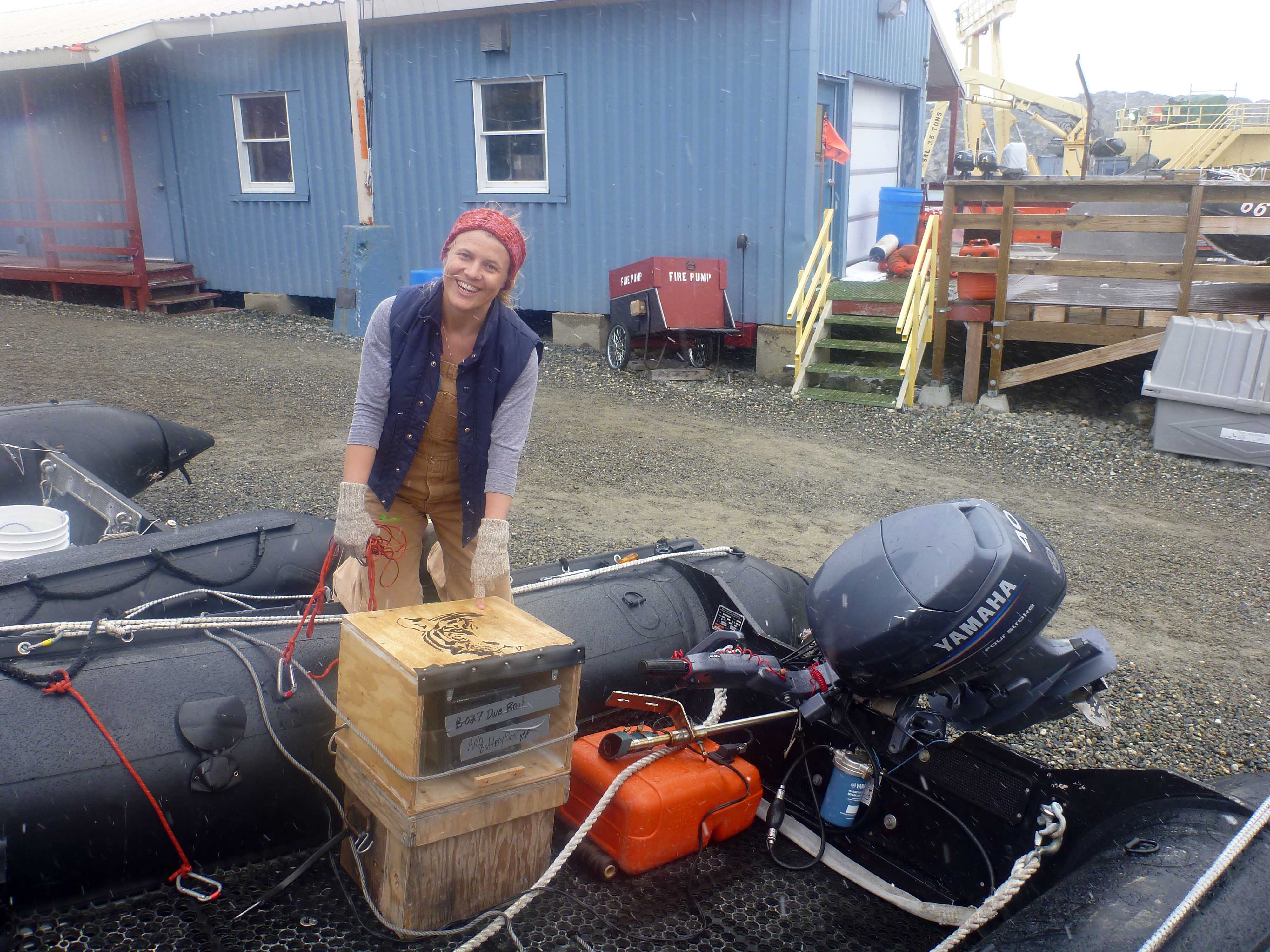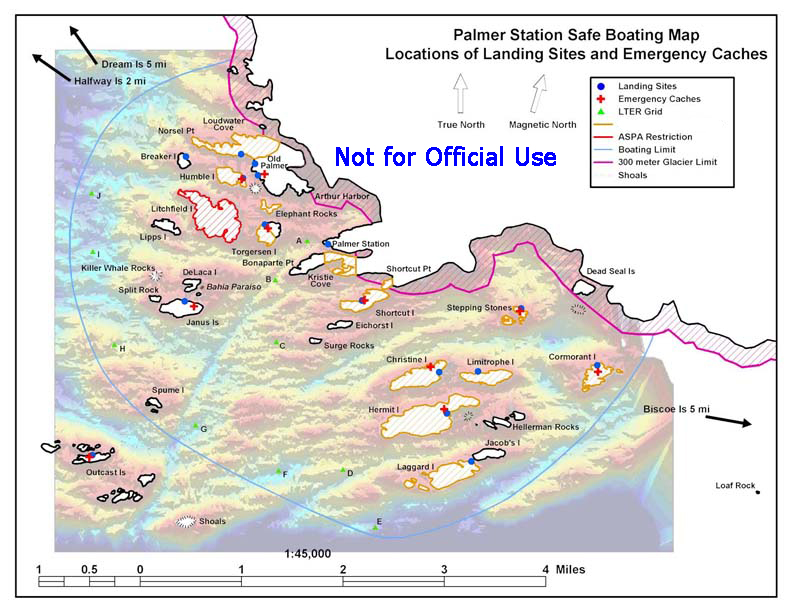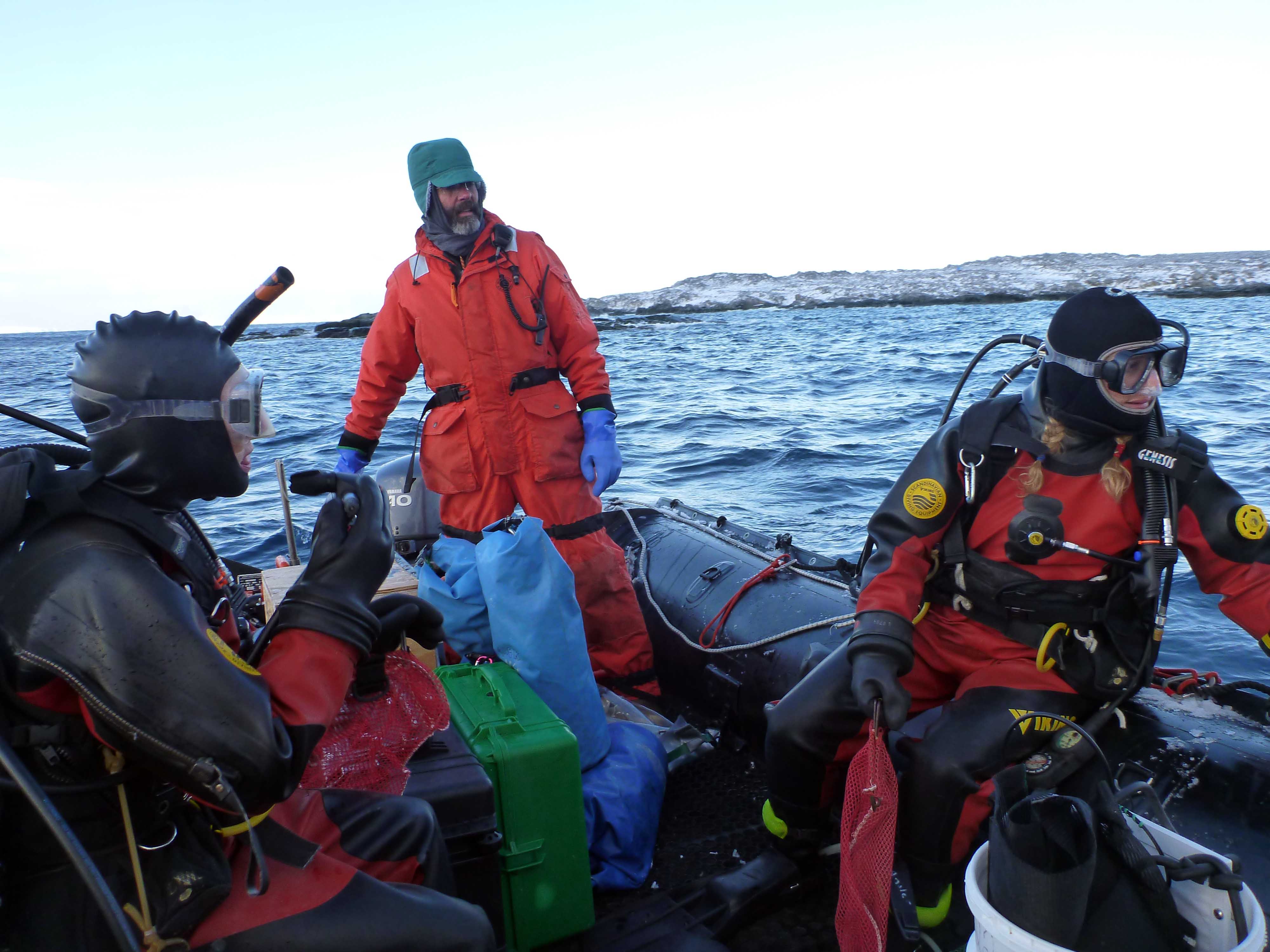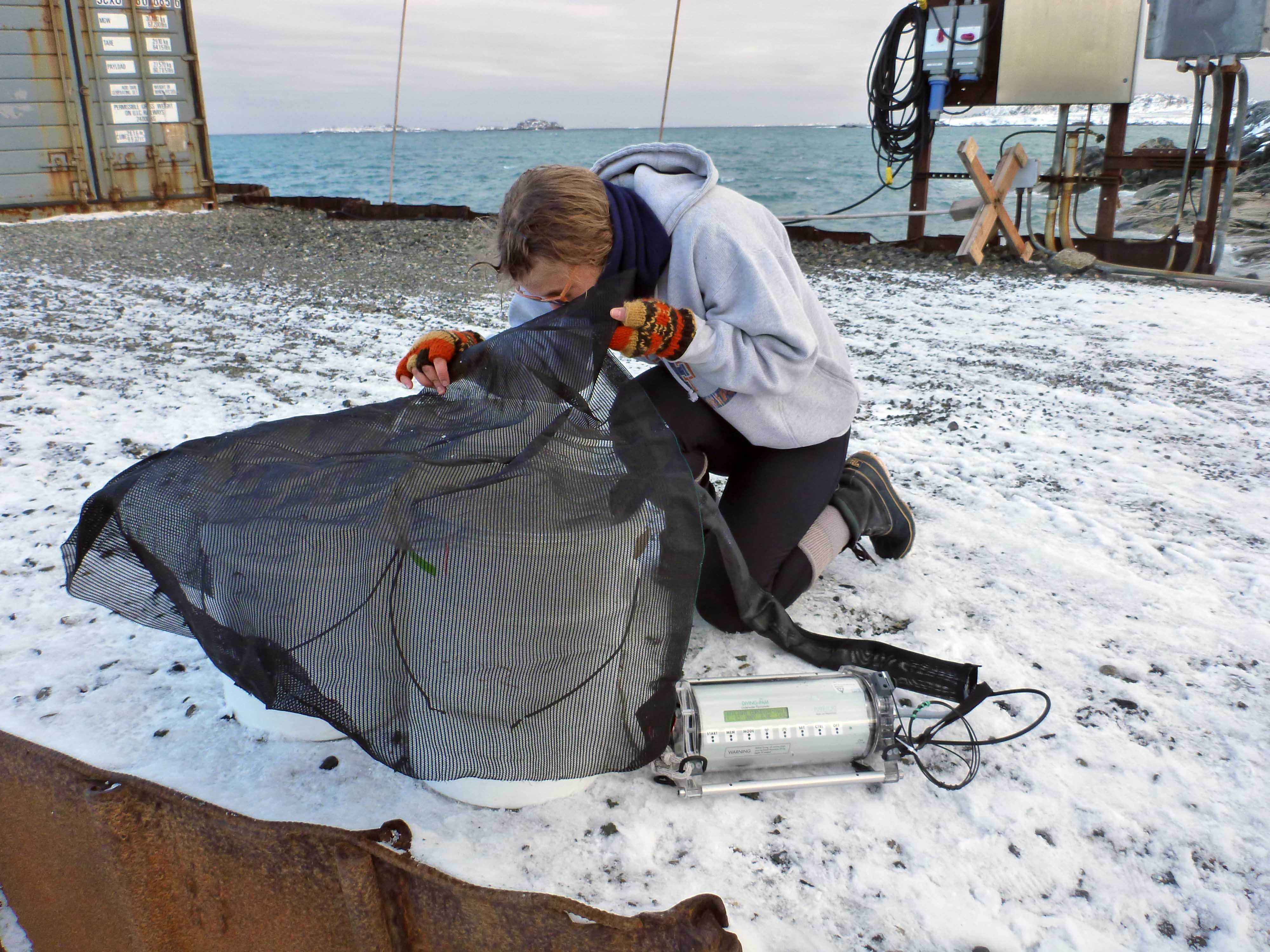
As a follow up to Chuck's and Maggie's descriptions of our diving operations (and as a tribute to Dio), I’m going to talk about today's dive. The weather has been fairly bad this month, more temperamental that I remember it being in April. But today we finally got to get away from station.
The winds slowed down to about 10 knots and despite the bumpy swell from yesterday’s southern winds and Sunday’s storm we still had some sites that we knew were protected from the lively seas and diveable - safe enough to “ride the tiger” (seen painted on box housing a depth finder on our zodiac, right) .
For the climate change experiment that Julie described, I take measurements of the photosynthetic capability of the two Desmarestia species using my good friend PAM ('who' I described in an earlier blog). To make sure that the instrument derived values are realistic I needed to measure these species in situ, or in their natural environment, as a comparison. So, for our dive this morning we needed a site that had reasonable sized communities of both species to enable an onsite determination.

DeLaca Island, which is also home to the shipwreck the Bahia Paraiso, has both species. Desmarestia are big, bushy brown algae and they can form really dense canopies (like in forests) underwater that cover the entire benthic habitat. At many of our sites only one species forms the canopy, for instance off the dock at Palmer station Desmarestia menziesii is very abundant. The benthic topography of DeLaca Island is such that the Bahia Paraiso is situated in a kind of amphitheater, from Jacobs Island around to the coastline of DeLaca. D. menziesii is pretty abundant between 5-10 meters while D. anceps covers large areas of the bottom from 10m down to the deepest part of this site which is probably 20-25m near the stern of the Bahia.
Today’s dive was unique in many ways. We had no town tender this morning because of a fire drill around 9:30 AM (Harry missed his opportunity for a second tour), so all group members went out to DeLaca. After we did our leopard seal search around the dive site we started getting suited up. Already in our fins and hoods, Maggie lost a contact on the floor of the Zodiac. That was a pretty comical scene: two divers and two tenders on their hands and knees searching for a tiny little convex lens in the floor mats. Eventually Julie found it and we continued suiting up, but Maggie was down to monocular vision for the dive.

Usually we have a dive plan set up and it’s communicated to the tenders so that they know where you’ll be for the pick-up. Our plan today was to drop down as deep as we could go, sight seeing for a bit to get an idea of what we might want to dive here for in the future. Then the plan was to come up and collect Desmarestia for PAM. All together a pretty short dive. The winds started picking up about the time we were finally ready (after prolonged eyeball search) to jump in so we putted around from our original drop into a more sheltered part of the island and got in.
The winds of late have been moving a lot of water around, and thankfully they’ve moved the murky, silty water away from Anvers Island (or so it seems) and our visibility was great. I think I even heard Maggie say “oooooo” when we dropped in. This was not a very deep spot like we had expected. It sloped down to about 17m, the bottom mostly made of bedrock and big boulders which were covered in various brown algae as well as some branching red algae. I collected my Desmarestia and was done with work in about 1 minute but decided that this was too good to end too soon. Change of plans, Maggie and I meandered around and made our way towards the north tip of DeLaca sight seeing. There’s a shallow shoal to make a safety stop and a safe pick up between DeLaca and the Bahia and we could see and hear the boat following us around above.
At our safety stop we saw a cool crustacean called Glyptonotus antarcticus- looks like the living fossil trilobite or more recent – cockroach!. Also we spied some rare algae species that we don’t see every year, and just as we were finishing our safety stop Maggie saw a leopard seal swim behind me near the shore of DeLaca. Seems we had been down too long in the midnight sea. Chuck and Julie saw him too so they revved the engine to let us know. A signal like that from the boat is our normal protocol for informing divers there’s a leopard seal in the area. Sure enough I looked over and saw his white spotted belly swimming away from me in the wash at DeLaca.
We ascended to the boat slowly and got in. Leopard seals can be curious animals, but not always. This guy was just cruising around near the shore minding his business so we weren’t very concerned. It was our first encounter this year on a dive, usually we see them more often but since we’ve been diving so little we haven’t hung out with ol’ lep yet. We treat these guys just like you might treat a tiger or shark; we don’t often see them and they don’t often hurt people, but between the velvet lies a truth of steal.

Back on the boat and getting warm we organized our samples and our gear to prepare for our ride back to station. Once we got to the dock, my samples had been dark adapted in buckets and PAM got busy. Despite a little wind, one-eyed Maggie and ol’lep we managed to have a very enjoyable and successful dive today just as planned.
-Holy Diver